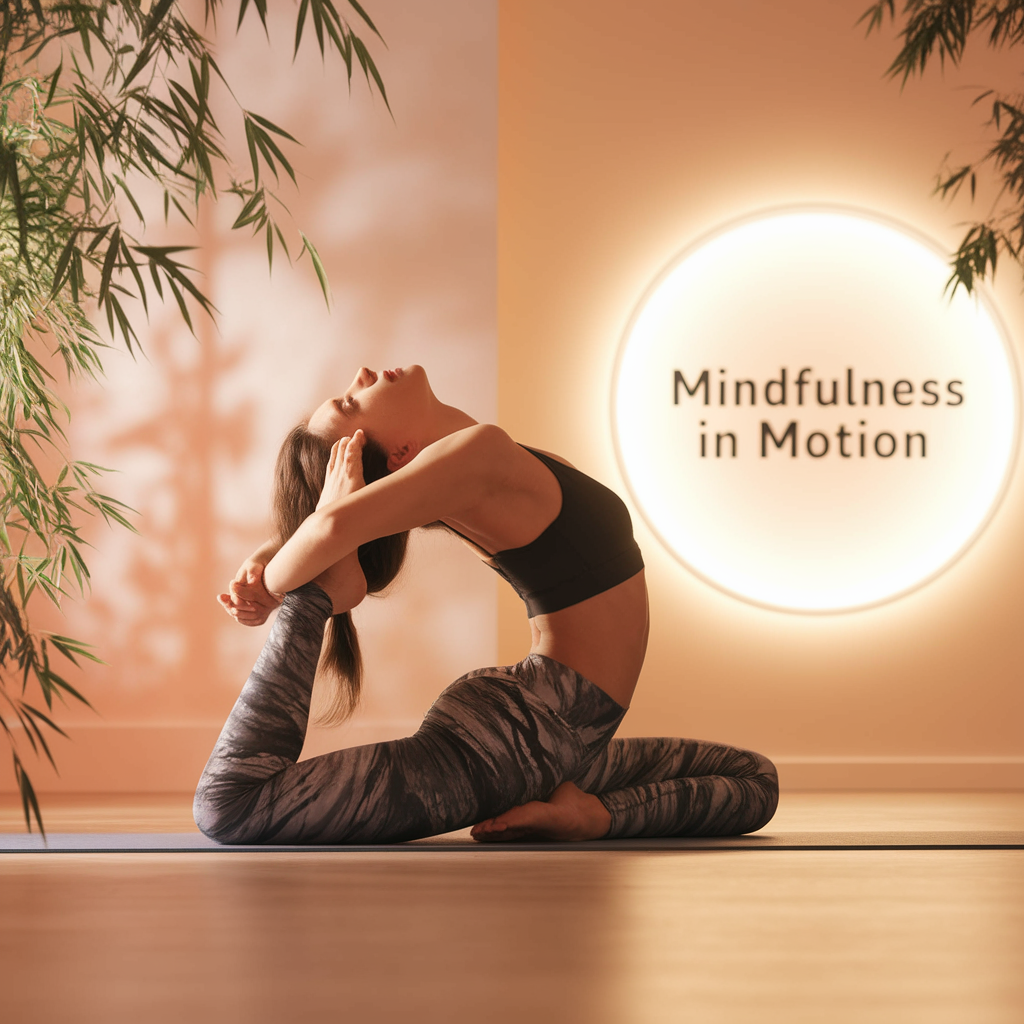Exploring the Rise of Mindfulness in Fitness Practices
Have you ever found yourself in the middle of a workout, your mind drifting to your grocery list, that awkward conversation you had last week, or what to binge-watch next on Netflix? If so, you’re not alone. In an age defined by distractions and perpetual hustle, many fitness enthusiasts are discovering that the key to truly effective workouts might not just lie in the intensity of their routines, but in the clarity of their mind. This is where mindfulness comes in.
It’s fascinating to think how mindfulness, once primarily associated with meditation and yoga, has slowly seeped into the mainstream fitness culture. It struck me recently while attending a local fitness class; the instructor emphasized the importance of being present during each movement, urging us to connect our breath with our actions. At first, I thought it might be a ploy to make the class seem more profound, but as the session progressed, I realized this approach could change the way we engage with our bodies and fitness.
The Backstory: From Meditation to Movement
The roots of mindfulness can be traced back to ancient Buddhist practices, emphasizing a deep awareness of the present moment. While the West has only recently started to embrace this philosophy, its integration into fitness practices is both timely and necessary. Studies show that mental focus can enhance physical performance, reduce stress, and even improve recovery times. It’s almost like your mind is a muscle that needs to be trained, too (and let’s be honest, many of us probably neglect that aspect).
In the last decade, mindfulness has also been shown to decrease anxiety and improve overall emotional well-being. With the bombardment of daily life—emails, social media notifications, and the incessant buzz of our smartphones—it’s no wonder that many are seeking a refuge in this ancient practice. Fitness, with its inherent physicality, provides an ideal platform for these techniques.
Mindfulness in Action: How It’s Transforming Workouts
So, how exactly does mindfulness manifest itself in fitness? There are several key components that are worth exploring:
- Breath Awareness: Focusing on your breath can anchor you in the moment. This technique is used in everything from yoga to high-intensity interval training (HIIT). It helps regulate your heart rate and can even enhance your endurance.
- Body Scanning: This technique involves tuning into different parts of your body to identify areas of tension or discomfort. It’s often used in yoga, but athletes are also starting to adopt this practice to improve their performance.
- Setting Intentions: Rather than just going through the motions, setting clear intentions for your workout can drastically change your mindset. It could be as simple as “I want to enjoy this workout” or “I want to feel stronger today.”
I recall a particularly grueling spin class where the instructor asked us to set an intention before we started pedaling. My mind said, “Survive,” but as I focused on that intention, I found myself pushing harder, almost transcending the physical struggle. It was a revelation; I was no longer just going through the motions. I was actively engaged.
Real-World Examples: Mindfulness in Different Fitness Disciplines
Mindfulness isn’t limited to yoga or meditation; it’s becoming a staple across various fitness disciplines. Here are some examples of how different areas of fitness are embracing this trend:
Yoga and Pilates
These practices have long embraced mindfulness. In yoga, the connection between breath and movement is paramount. The slow, deliberate poses encourage practitioners to cultivate awareness and presence. Pilates, often touted for its focus on core strength, also incorporates mindfulness through controlled movements and breathing techniques. The result? A workout that not only sculpts the body but also calms the mind.
Running
Believe it or not, even the solitary act of running can be transformed through mindfulness. Runners are increasingly adopting techniques such as “mindful running,” where they focus on their surroundings, their breath, and the rhythm of their feet hitting the pavement. This practice not only enhances the running experience but can also reduce the risk of injury as runners become more attuned to their bodies.
Strength Training
As someone who has spent countless hours in the weight room, I can attest to the importance of mindfulness during strength training. Concentrating on each lift, feeling the muscles engage, and even visualizing the desired outcome can lead to better form and improved results. It’s a game changer.
The Science Behind Mindfulness and Fitness
Now, before we get too carried away with the warm and fuzzy feelings that mindfulness brings, let’s take a look at some scientific evidence supporting its efficacy in fitness. Research has shown that mindfulness can:
- Enhance athletic performance by improving focus and reducing distractions.
- Decrease feelings of fatigue and increase resilience during workouts.
- Boost overall satisfaction with one’s fitness regimen, making it more enjoyable and sustainable.
One study published in the Journal of Sport Psychology found that athletes who practiced mindfulness techniques reported a significant reduction in performance anxiety. They felt more in control of their emotions during competition, which is crucial for peak performance. It’s a bit like having a mental coach right there with you, whispering, “You’ve got this!”
Barriers to Mindfulness in Fitness
Despite the many benefits, the integration of mindfulness into fitness isn’t without its challenges. For one, many people are skeptical about the effectiveness of mindfulness. “Can it really help me lift more weight or run faster?” they might wonder. Others may feel that in a world where fitness is often equated with sweat, grunts, and maxing out on reps, mindfulness seems a bit too… zen.
Additionally, let’s face it—life is busy. Finding time to meditate or practice mindfulness may feel like just another item on an already overflowing to-do list. And it’s not easy to ask someone to slow down when they’re used to cranking up the intensity. This is where the real skill lies: integrating mindfulness seamlessly into existing practices rather than treating it as a separate task.
How to Cultivate Mindfulness in Your Fitness Routine
If you’re intrigued by the idea of incorporating mindfulness into your fitness routine (and I highly recommend you give it a shot), here are some practical tips to get started:
- Start Small: You don’t need to overhaul your entire routine. Begin by focusing on your breath for just a minute or two during your workout. Gradually increase this time as you become more comfortable.
- Practice Gratitude: Before or after a workout, take a moment to reflect on what your body can do. This shift in perspective can foster a deeper appreciation for your fitness journey.
- Limit Distractions: In our hyper-connected world, it’s easy to let distractions creep in. Try to leave your phone in another room or turn off notifications during workouts to stay present.
- Engage Your Senses: Pay attention to the sights, sounds, and sensations around you. Notice the feeling of the ground beneath your feet or the rhythm of your breath as you move.
It might feel a bit awkward at first—almost like trying to dance for the first time after years of just shuffling your feet—but with practice, it can become second nature.
The Future of Mindfulness in Fitness
As we look ahead, it’s evident that mindfulness will continue to shape the fitness landscape. More gyms are incorporating mindfulness classes, and even fitness apps are starting to offer guided meditations alongside workout routines. The trend is growing, and for good reason: people are recognizing the holistic benefits of marrying mental clarity with physical strength.
It’s exciting to consider how mindfulness can evolve within the fitness community. Perhaps we’ll soon see virtual reality environments where users can practice mindfulness in serene, controlled settings, making it easier to escape the chaos of the outside world. Or imagine fitness retreats that blend high-intensity workouts with mindfulness workshops in breathtaking natural settings. The possibilities are endless!
Conclusion: Finding Balance
At the end of the day, the rise of mindfulness in fitness practices reflects a broader cultural shift towards balance—balancing our busy lives with moments of presence, and our physical pursuits with mental clarity. As we navigate the complexities of modern life, integrating mindfulness into fitness can help us not only strengthen our bodies but also cultivate a deeper connection with ourselves.
So, the next time you lace up your sneakers or roll out your yoga mat, remember: it’s not just about the reps, the miles, or the calorie burn. It’s about being present, engaging fully with your body, and, perhaps most importantly, enjoying the journey along the way. After all, your workout should feel less like a chore and more like a celebration of what your body can do.
Now, if you’ll excuse me, I have to go practice what I preach—starting with a few mindful stretches. (Who knew a little mindfulness could go such a long way?)







